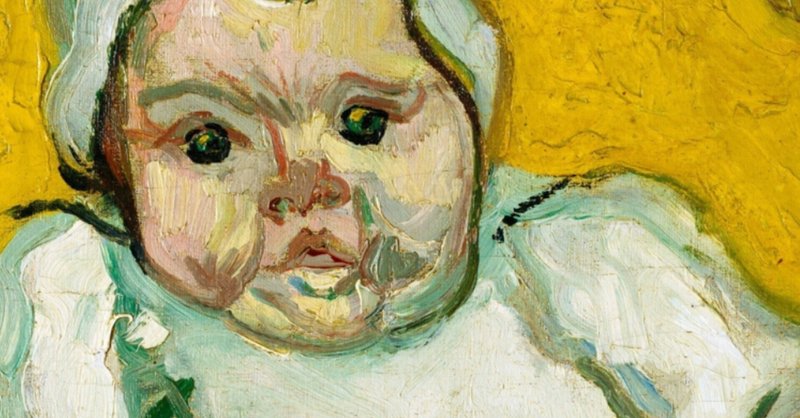
WISHING 05/14/22 真理を見る目Eye for Truth
最近よく「子供のワクチンをどうすべきか、先生はどう思いますか?」と訊かれます。しかし、自然は自然の法則でしか動かないことをわかってほしいです。ウイルスをはじめとして自然界にとって、「マスクはまだ外さないほうがよいと思う」とか、「子供にワクチンは打たないほうがよいと思う」などという人の意見は、ただの戯言にすぎません。そこかしこに満ち溢れているそうした意見の数々は真実を見誤らせるノイズでしかありません。見る目がない限り、ノイズの海の中にたまにある宝物を見つけることは永遠にできません。
若いマウスの脳脊髄液を1週間注入すると、年老いたマウスの記憶が改善されました。
若い血液が老化の兆候を逆転させるという先行研究は、アルツハイマー病やパーキンソン病の患者に、若い人の血液をろ過して投与するという、最近の臨床試験につながっています。しかし、こうした治療法がどの程度成功するか、ましてやどの程度広く臨床で使用できるかは、未だ定かではありません。
今から5年前、スタンフォード大学の若手神経科学者が上司に大胆な提案を持ちかけました。若いマウスの脳脊髄腔から液体を取り出し、それを年老いたマウスの脳に注入して、老化したネズミを若返らせることができないかというものでした。
脳脊髄液は脳の深部にあって絶えず入れ替わっている手の届きにくい液体で、実験は技術的な限界のため非常に困難で無謀としかいいようのないものでした。また、マウスから脊髄液を採取する際、マウスの血液が微量でも混入しないようにするのはきわめて難しい。
彼女は辛抱強く、マウスから無色の液体を採取する方法を見つけ出すことだけに1年間取り組み、10マイクロリットルの脳脊髄液の採取に成功しました。
若い脳脊髄液を注入し、記憶の形成と保存に特化した脳の一部である海馬を分析しました。若返った脳脊髄液環境は、老化した海馬で、オリゴデンドロサイトという神経細胞の前駆細胞の増殖と分化を促進しました。オリゴデンドロサイトは、神経線維を絶縁し、神経細胞間の強力な信号接続を保証するミエリンと呼ばれる脂肪の層を作り出す細胞です。
若い脳脊髄液中に含まれる線維芽細胞成長因子17(FGF17)というタンパク質が、オリゴデンドロサイトの働きを回復させ、神経の絶縁を強化する一連の出来事に関与していることを見つけました。
FGF17だけを古い脳脊髄液に注入することで、若い脳脊髄液の効果を部分的に再現することができました。さらに注目すべきは、若いマウスでこのタンパク質をブロックすると、脳機能が低下するように見えました。これらによって、FGF17が認知機能に影響を与え、年齢とともに変化することをより強く証明することができました。さらに、ミエリン形成の破綻が加齢に伴う記憶喪失に関係しているという説が有力視されることになります。
この発見は、老化という不可避の変化に耐える脳を作るためには、特定の病気のプロセスに干渉して老化を抑えるよりも、脳の環境を若い状態に回復させることが重要であることを示す最新の知見となりました。そして、脳脊髄液は、脳を操作する媒体として使えることも証明されました。
ただし、ヒトの治療として実用化するには、さらに困難な課題を克服しなければなりません。脳脊髄液の採取には脊髄穿刺が必要です。血液採取よりもはるかに難しい。また、輸液に十分な量の脳脊髄液を採取するには倫理的な問題があります。
ひときわ目立つ科学の大発見のニュースですが、残念ながら、日本で報道されることは決してありません。
自然が誰かの考えによって決まるわけではない、だから今後我々がどうすべきかは、誰かに訊くのではなく、自然に訊かなければ答は得られないということを、パンデミックにこれだけどっぷり浸かっても、人々が全く学ばないというひとつの結果もどうやら明らかになっています。科学をただ真似してわかったふりだけしていても、中身はガリレオ・ガリレイ以前から全く進歩していないようです。
Lately I've often been asked, "What do you think we should do about vaccines for children?" However, I hope people understand that nature only works according to the laws of nature. For the natural world, including viruses, the opinions of those who say, "I think we shouldn't take off the mask yet," or "I think we shouldn't vaccinate our children," are nothing but nonsense. The opinions that abound out there are nothing but noise that misleads us to the truth. Unless you have eyes to see, you will never find the occasional treasure in the sea of noise.
A one-week infusion of cerebrospinal fluid from young mice improved the memory of older mice.
Prior studies showing that young blood reverses the signs of aging have led to recent clinical trials in which patients with Alzheimer's and Parkinson's disease are given filtered blood from younger people. However, it is not yet certain how successful these treatments will be, much less how widely they can be used in clinical practice.
Five years ago, a young neuroscientist at Stanford University approached her boss with a bold proposition. Could she take fluid from the cerebrospinal cavity of a young mouse and inject it into the brain of an old mouse, thereby rejuvenating the aging rodent?
Cerebrospinal fluid is an inaccessible fluid that is constantly being replaced deep in the brain, and the experiment was extremely difficult and reckless due to technical limitations. In addition, it was extremely difficult to ensure that even a trace amount of mouse blood was not contaminated when collecting spinal fluid from mice.
She patiently worked for a year just to find a way to collect colorless fluid from the mice, and succeeded in collecting 10 microliters of cerebrospinal fluid.
The young cerebrospinal fluid was injected and analyzed in the hippocampus, a part of the brain dedicated to memory formation and storage. The rejuvenated cerebrospinal fluid environment promoted the proliferation and differentiation of neuronal progenitor cells called oligodendrocytes in the aging hippocampus. Oligodendrocytes are cells that produce a layer of fat called myelin that insulates nerve fibers and ensures strong signal connections between neurons.
They found that a protein called fibroblast growth factor 17 (FGF17) in young cerebrospinal fluid, is involved in a series of events that restore oligodendrocyte function and strengthen nerve insulation.
By injecting only FGF17 into the old cerebrospinal fluid, they were able to partially replicate the effects of the young cerebrospinal fluid. More notably, blocking this protein in young mice appeared to impair brain function. These provided stronger evidence that FGF17 affects cognitive function and changes with age. Furthermore, the theory that disruption of myelin formation is related to age-related memory loss is gaining traction.
This finding is the latest indication that restoring the brain's environment to a younger state is more important for building a brain that can withstand the inevitable changes of aging than interfering with specific disease processes to suppress aging. It also proved that cerebrospinal fluid can be used as a medium to manipulate the brain.
However, more difficult challenges must be overcome before it can be put to practical use as a human treatment. Collection of cerebrospinal fluid requires a spinal tap. This is much more difficult than blood sampling. There are also ethical issues involved in collecting a sufficient amount of cerebrospinal fluid for infusion.
This is a news of a major scientific discovery that stands out from the crowd, but unfortunately, it is never reported in Japan.
One result of being so immersed in the pandemic is that people apparently have not learned that nature is not determined by anyone's ideas, and that we must ask nature, not someone else, for answers as to what we should do in the future. Even if we just imitate science and pretend to understand it, it seems that the contents of the brain have not progressed at all since before Galileo Galilei.
(1012)
(1013)
この記事が気に入ったらサポートをしてみませんか?
